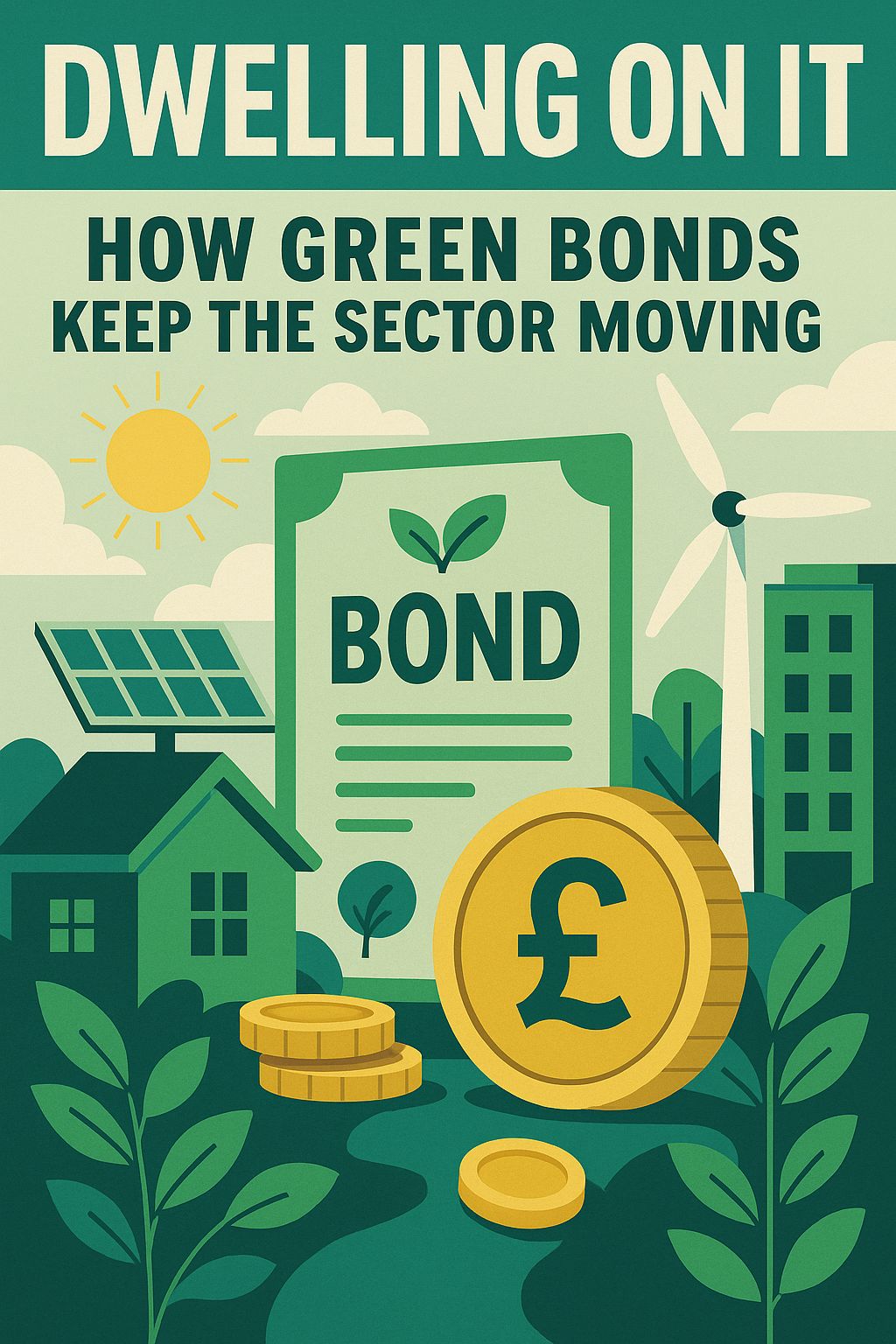- Dwelling On It
- Posts
- How Green Bonds Keep the Sector Moving
How Green Bonds Keep the Sector Moving
Billions raised. Billions to come. Green bonds are transforming UK housing.

The housing sector is under pressure like never before. Homes need to be warmer, safer, and greener. Retrofit targets are looming, development pipelines are squeezed, and boards are being asked to deliver all this with less grant, more scrutiny, and a sharper eye from regulators.
In that environment, the question of how to pay for it all becomes unavoidable. While new ideas like carbon credits, outcome-based contracts, social impact finance, get airtime, the tool that has quietly become the sector’s most reliable workhorse is the green and sustainability bond.
These instruments aren’t exotic or experimental. They’re straightforward, proven, and already driving billions of pounds of investment in energy efficiency, decarbonisation, and affordable housing across the UK.
What are Green Bonds?
A green or sustainability bond is essentially a standard debt instrument raised on the capital markets. The difference lies in the promise: the proceeds are ring-fenced for projects with measurable environmental and/or social impact.
In UK housing, that usually means:
Retrofitting homes to improve EPC ratings and cut carbon.
Building new affordable homes to high energy-efficiency standards.
Investing in renewable energy or sustainable estates (solar, heat networks, EV infrastructure).
Funding community benefits such as local amenities or sustainable transport.
Accountability is at the core. Issuers must publish annual impact reports showing how the money has been spent and what difference it has made – EPC uplifts achieved, tonnes of CO₂ saved, numbers of affordable homes delivered.
Why they matter
1. Scale at speed
A single green bond can raise hundreds of millions in one transaction, giving housing associations the firepower to fund multi-year programmes that would never be possible from piecemeal borrowing or annual surpluses.
2. Cost effectiveness
ESG-focused investors are actively seeking impact opportunities. That demand often translates into sharper pricing and lower borrowing costs compared to conventional bonds. The result: cheaper capital for landlords, and more resources freed up for works on the ground.
3. Credibility and compliance
Green bonds come with recognised frameworks, like the ICMA Green Bond Principles, which require transparency and external validation. That reassures investors, but also gives boards and regulators confidence that landlords are reporting against robust standards.
4. Flexibility with focus
Proceeds can support a mix of priorities such as large-scale retrofit to new build and estate regeneration. As long as they align with the sustainability criteria. That gives landlords the ability to take a strategic, portfolio-wide approach rather than funding projects in isolation.
Who’s leading the way
Green and sustainability bonds are no longer niche; they’re embedded in the sector’s mainstream financing strategy.
Clarion Housing raised £350m in 2021 to support energy efficiency upgrades and new affordable homes.
Peabody followed with another £350m bond in 2022, backing both new development and retrofit.
The Greater London Authority (GLA) issued a £90m green bond in 2022, earmarked for retrofitting social housing and local clean energy projects.
The Housing Finance Corporation (THFC) has developed pooled green finance options, giving smaller associations access to the bond market without needing to go it alone.
Together, these deals represent billions of pounds of investment and a clear signal that green finance is no longer an experiment but a backbone of housing delivery.
What landlords need to know
Green bonds are powerful, but they are not automatic. Issuing one requires:
Impact reporting capacity: You need systems in place to track EPC changes, CO₂ reductions, and delivery metrics. Without reliable data, you can’t demonstrate impact.
Strong credit and credible plans: Investors want assurance. Protecting your credit rating and setting out a robust, future-proofed business plan is essential.
Clear narrative: Lenders and stakeholders respond best when the link between money raised and outcomes delivered is unambiguous.
These aren’t barriers, but they do mean landlords must invest in data quality, governance, and transparency.
The bigger picture
The attraction of green and sustainability bonds is not just financial. They represent a meeting point between capital markets and social purpose. Investors get credible, ESG-aligned products. Landlords get large-scale, affordable funding. Residents get warmer homes, lower bills, and more sustainable communities.
In a sector where financial and social objectives often pull in different directions, green bonds show that alignment is possible and powerful.
Final thought
Amid all the new funding ideas being discussed in the sector, one lesson stands out. When it comes to certainty, scale, and credibility, green and sustainability bonds remain the most reliable source of capital for housing. They have already demonstrated their value in practice, they are expanding rapidly across the sector, and they are set to remain at the centre of how landlords pay for the next decade of retrofit, new development, and community investment.
The important point is that green bonds are not a distant or theoretical solution. They are already here, already working, and already driving billions of pounds into projects that improve homes and communities. Rather than being seen as the finance of tomorrow, green and sustainability bonds are better understood as the finance of today. They are quietly becoming the workhorse of progress in housing, giving the sector the stability and scale it needs to deliver safer, warmer, and greener homes.
Articles to Dwell On


